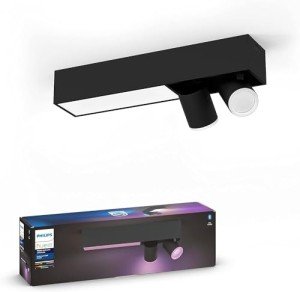How To Become A Prosperous Contemporary Lighting UK When You're Not Business-Savvy

Contemporary Lighting in the UK: Transforming Spaces with Illumination
Lighting plays a vital role in defining the atmosphere and functionality of any space. In the UK, contemporary lighting has become a significant design element, offering innovative services that blend looks with functionality. Info explores the numerous designs, materials, and technologies shaping contemporary lighting, along with tips for choosing the most appropriate fixtures for various settings.
The Evolution of Contemporary Lighting
Contemporary lighting in the UK shows the changing tastes and technological advancements in design. It encapsulates a large variety of styles, consisting of:
- Minimalist: Characterized by simpleness and tidy lines, minimalist lighting fixtures concentrate on kind and function without unnecessary embellishments.
- Industrial: Inspired by metropolitan settings, industrial lighting integrates raw products like metals and woods with strong styles, creating edgy, functional pieces.
- Scandinavian: Known for its heat and simplicity, Scandinavian lighting often includes soft colors and natural materials, concentrating on creating a relaxing environment.
- Smart Lighting: This modern trend incorporates technology with style, permitting users to control their lighting with mobile apps, voice commands, or automation systems.
To highlight the advancement and range in the field of contemporary lighting, consider the table below, which highlights key qualities of various designs.
| Design | Secret Characteristics | Popular Materials | Perfect Spaces |
|---|---|---|---|
| Minimalist | Easy, functional styles | Metal, glass, wood | Modern homes, offices |
| Industrial | Raw, incomplete look | Steel, concrete, wood | Lofts, galleries |
| Scandinavian | Comfortable, warm visual appeals | Natural fibers, light wood | Living rooms, coffee shops |
| Smart | Integrated technology, automation | Differs widely | Houses, workplaces, retail areas |
Selecting Contemporary Lighting Fixtures
Selecting the right lighting fixtures for an area requires mindful factor to consider of several factors. Here are crucial elements to keep in mind:
1. Function of the Space
Before selecting fixtures, consider the designated use of the location. Various functions need different types of lighting:
- Task Lighting: Focused lighting for activities such as reading, cooking, or studying. Examples consist of table lamps and under-cabinet lights.
- Ambient Lighting: General lighting that supplies general illumination. Ceiling lights and pendant fixtures fall under this category.
- Accent Lighting: Designed to highlight particular features or locations, such as artwork or architectural information. Wall sconces and mounted lights prevail options.
2. Style and Theme
The lighting ought to match the existing design. Select fixtures that match or improve the overall style of the space, whether it's contemporary, rustic, or diverse.
3. Size and Scale
Think about the percentage of the lighting fixtures relative to the space. A big chandelier may look sensational above a large table, while smaller pendant easy work well in compact settings.
4. Energy Efficiency
With increasing energy expenses and ecological issues, choosing energy-efficient lighting alternatives is necessary. LED lights are an outstanding choice, offering longevity and lower energy intake.
5. Flexibility
In modern design, flexibility is key. Fixtures that can be adjusted or rearranged enhance performance, permitting users to develop various atmospheres as needed.
Popular Contemporary Lighting Brands in the UK
The contemporary lighting market in the UK boasts numerous brand names understood for their ingenious designs and quality workmanship. Some noteworthy points out include:
- FLOS: An Italian brand commemorated for its artistic and renowned lighting fixtures that often function as art pieces.
- Tom Dixon: A British designer acknowledged for his modern, industrial styles that magnificently integrate metal and light.
- Anglepoise: Known for its flexible, functional lamps, ideal for a range of settings from office to creative studios.
- John Lewis: Offers a range of contemporary lighting services that deal with a broader audience, including affordable yet stylish options.
FAQs about Contemporary Lighting in the UK
1. What is contemporary lighting?
Contemporary lighting describes lighting styles and fixtures that show current style patterns, often defined by tidy lines, innovative shapes, and the usage of modern products and innovations.
2. How do I select the best lighting for my home?
Think about the purpose of the room, existing design, size of fixtures, energy efficiency, and versatility. Evaluate how each piece will contribute to the total ambiance and performance of your space.
3. What are some energy-efficient lighting options offered in the UK?
LED lights are the most prominent energy-efficient alternative, known for their long life-span and low energy usage. Compact fluorescent lights (CFLs) and halogen bulbs are other alternatives.
4. Where can I shop for contemporary lighting in the UK?
Contemporary lighting can be discovered in numerous retail outlets, both online and in physical shops. Significant sellers include John Lewis, Habitat, and specialized lighting stores.
5. Can contemporary lighting work in traditional areas?
Absolutely! Contemporary lighting can boost traditional spaces when picked thoughtfully. Picking fixtures with a balance between modern and timeless aspects can create a harmonious design.
Contemporary lighting in the UK represents more than simply illumination; it embodies design innovation and imagination, changing spaces and boosting performance. As patterns continue to develop, house owners and designers alike can check out an extensive variety of styles and technologies, guaranteeing that every room bursts with life, warmth, and character. By thinking about the necessary aspects outlined in this article, one can curate a collection of lighting fixtures that resonates with personal style and meets useful requirements, ultimately shaping comfortable and aesthetically appealing environments.

